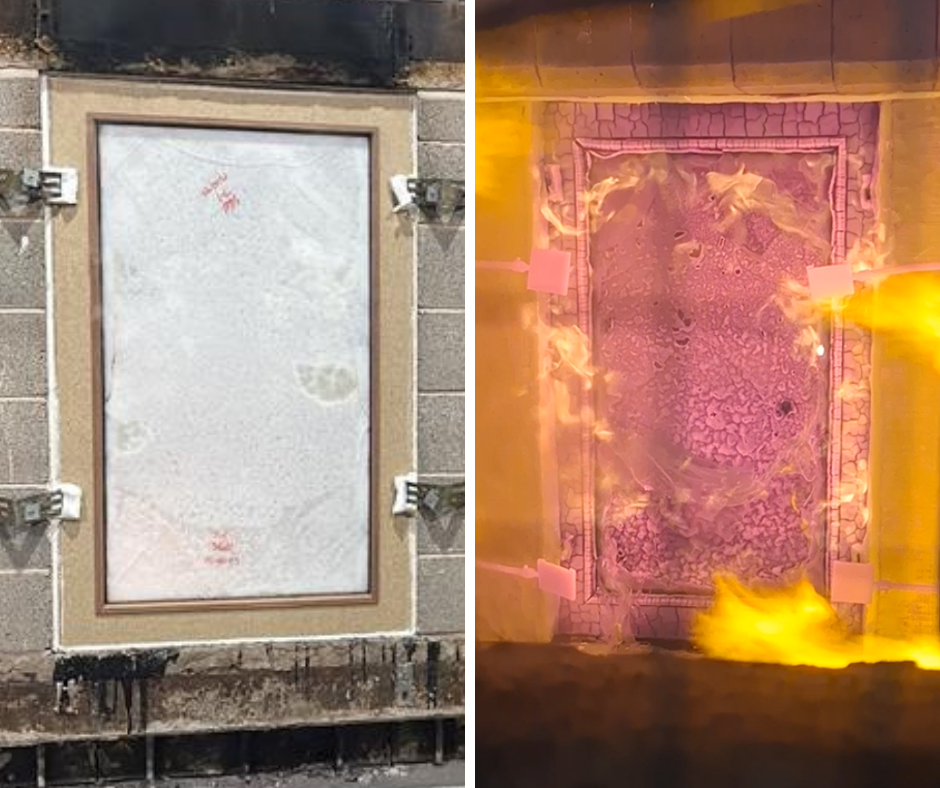A system-approach to fire safety
Steve Goodburn, our Business Development Director, examines the importance of treating buildings as interconnected systems, with each component playing a crucial role in maintaining the integrity of a fire protection strategy.

In the wake of the Grenfell Tower tragedy and the subsequent Hackitt Review, specifiers and building designers are reassessing how fire safety is approached in buildings. This shift in perspective is particularly important in the context of passive safety, where fire doors are a primary, yet sometimes overlooked, line of defence.
Fire doors are essential in preventing the spread of fire within a building. They are carefully designed to compartmentalise fire and smoke, ensuring that they are contained for a given amount of time, allowing occupants time to evacuate safely and limiting damage to property.
However, what many fail to realise is that there is more to a fire door than meets the eye. It’s much more than just the door leaf – a fire door is a complex system composed of various elements that must work together – and be tested together – to achieve the desired fire safety performance. These components, which include the door leaf, frame, glazing, ironmongery, seals and hardware, work collectively as part of a complete system, which has to be certified to meet the regulations.
Recent developments in fire safety standards
One of the challenges we face today is the shift towards more rigorous fire safety standards, which reflect the lessons learned from past tragedies. As part of the ongoing upgrades to building regulations, there has been a focus on ensuring that passive fire protection systems, including fire doors, meet increasingly stringent requirements.
The Government has confirmed that from September 2029, the national system for the classification of fire doors based on testing to BS 476-22 will no longer be acceptable as a method of demonstrating compliance with Building Regulations in England. Instead, fire doors will need to meet the European Fire Door Testing standard; BS EN 13501-2. The decision was taken to adopt a single classification system, which aligns with the recommendations of the Hackitt Report. This called for greater consistency and transparency in building safety.
The transition to European Standards poses significant challenges for the industry. EN standards require different testing protocols and approaches to assessing the performance of fire protection systems. For example, the methods used to measure temperatures during fire tests differ. BS 476-22 uses unshielded thermocouples to monitor the furnace temperature, whereas EN 1634-1 uses shielded thermocouples, which are less responsive to changes in temperature, resulting in increased heating energy in the early stages of the test.
In addition, the neutral pressure plane is positioned lower in BS EN 1634-1 tests (500mm from the furnace floor level, compared to 1000mm in BS 476-22). This means there is an increased chance of hot gases and flames on the unexposed side due to higher positive pressure at the top of the door. These changes require that door systems, including fire doors, need to be retested to meet the new criteria.
Why a systematic approach is essential
In light of these changes, it is more important than ever that fire safety professionals adopt a system-based approach that incorporates the latest standards and requirements. Taking this approach to fire safety means recognising that every element of the building’s fire protection strategy is interdependent. Isolating any single element can have unintended consequences on the overall effectiveness of fire safety measures. A fire door leaf, for example, may be fire-rated on its own, but if it is installed with an incompatible frame or if the seals aren’t the right type, the system may not perform as required. This approach is especially important during refurbishments or upgrades, where parts of the fire door system are replaced, yet the other components may remain unchanged. If these parts are not tested together as a system, the overall fire safety performance can be compromised.
Helping fire door manufacturers to get ahead
There is a need for fire door manufacturers to ‘get ahead of the game’ and ensure they are working with fire safety glass manufacturers which have accredited systems and the experience in meeting the more stringent testing regime in order to comply with the regulations.
In anticipation of tightening fire safety regulations, we introduced Pyroguard Advance last year, featuring innovative gel interlayer technology to give door manufacturers a high performance easy-to-process fire glass solution. This is the only UK manufactured cuttable fire glass, which has undergone extensive testing across a wide range of glazing systems, door cores, and intumescent seals from our sister company Mann McGowan, to enable full certification.
Fire doors play a vital role in fire safety, but they are just one component of a broader passive fire protection system, which includes walls, windows and other barriers designed to prevent fire and smoke from spreading. This is why the system-based approach extends beyond just fire doors. The interaction between fire doors and other fire-resistant elements, such as walls and firestopping measures, is key to ensuring overall building safety. Once a fire door system is tested and accredited, any deviation from the tested system can jeopardise the overall effectiveness of the fire protection strategy.
A building’s fire safety strategy should not focus on individual components in isolation but rather should take into account all fire protection elements as part of a larger, interconnected system. Ensuring that every element, from the fire doors and frames to the glazing, seals and even the surrounding walls, is properly specified, installed and maintained in line with regulatory standards is essential to achieving effective fire protection.
By doing so, as an industry we can ensure that we are not only complying with regulatory changes but also providing the highest level of protection for building occupants.
To find out more, please contact us.
